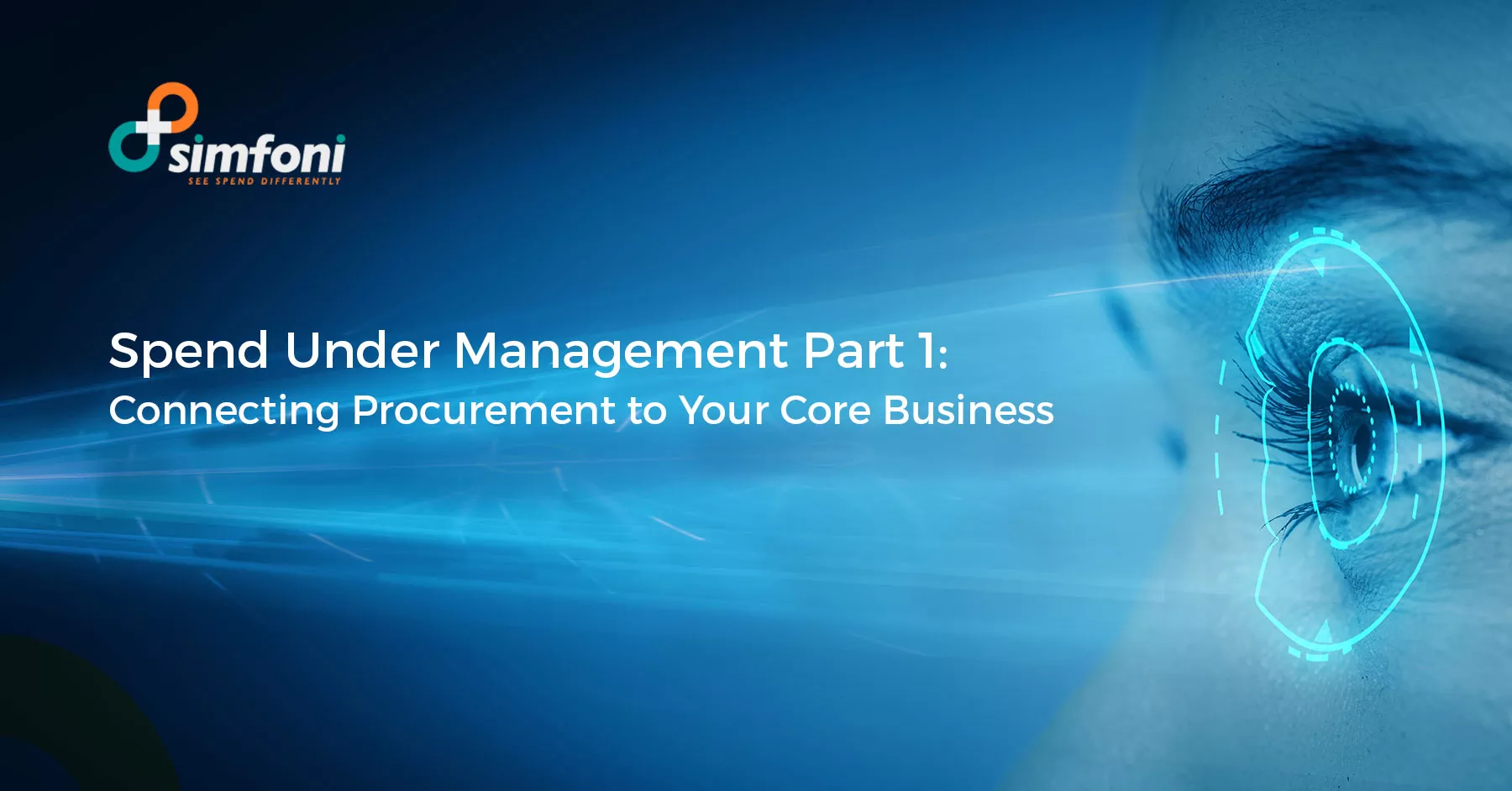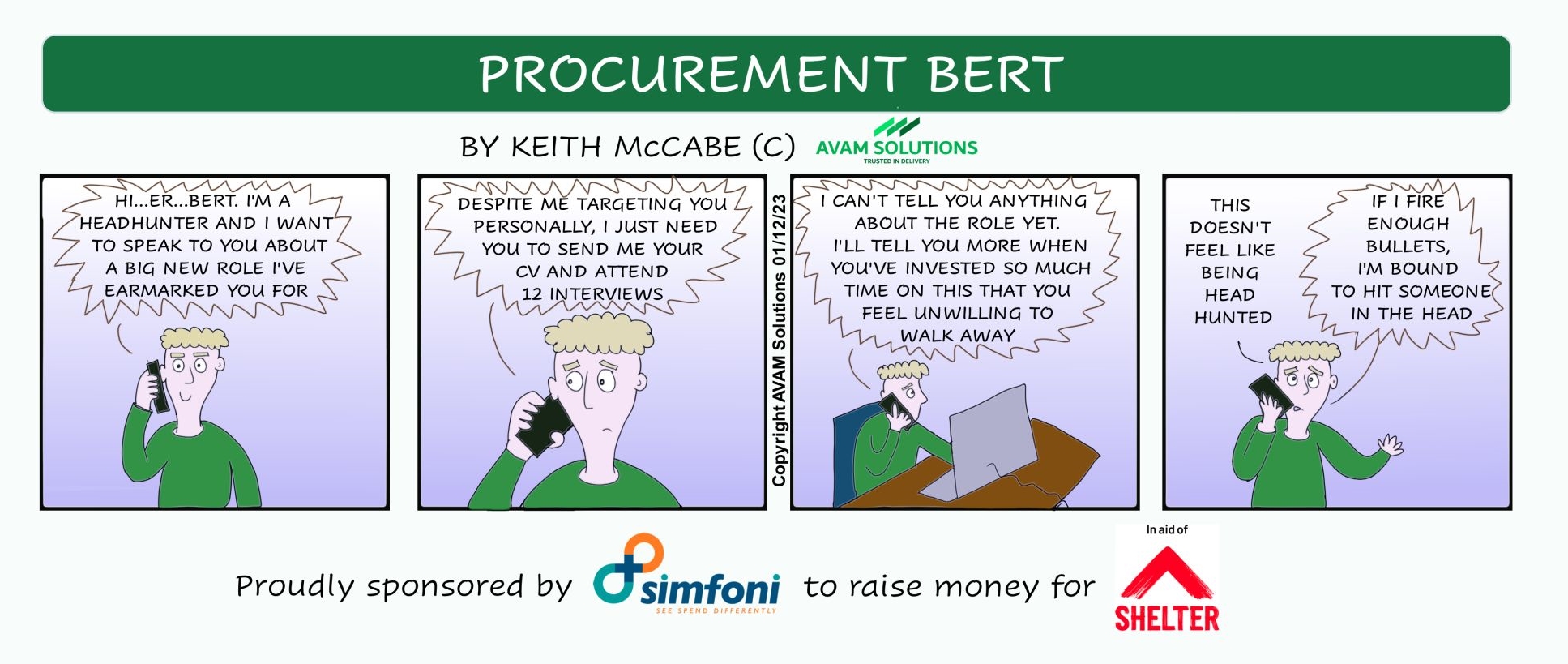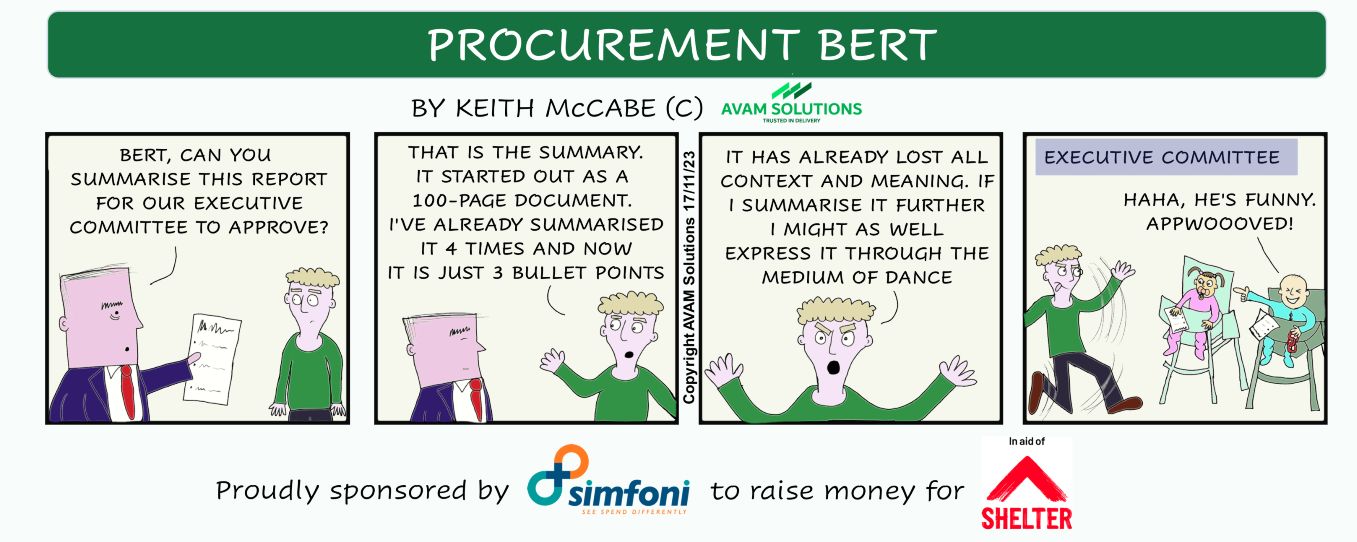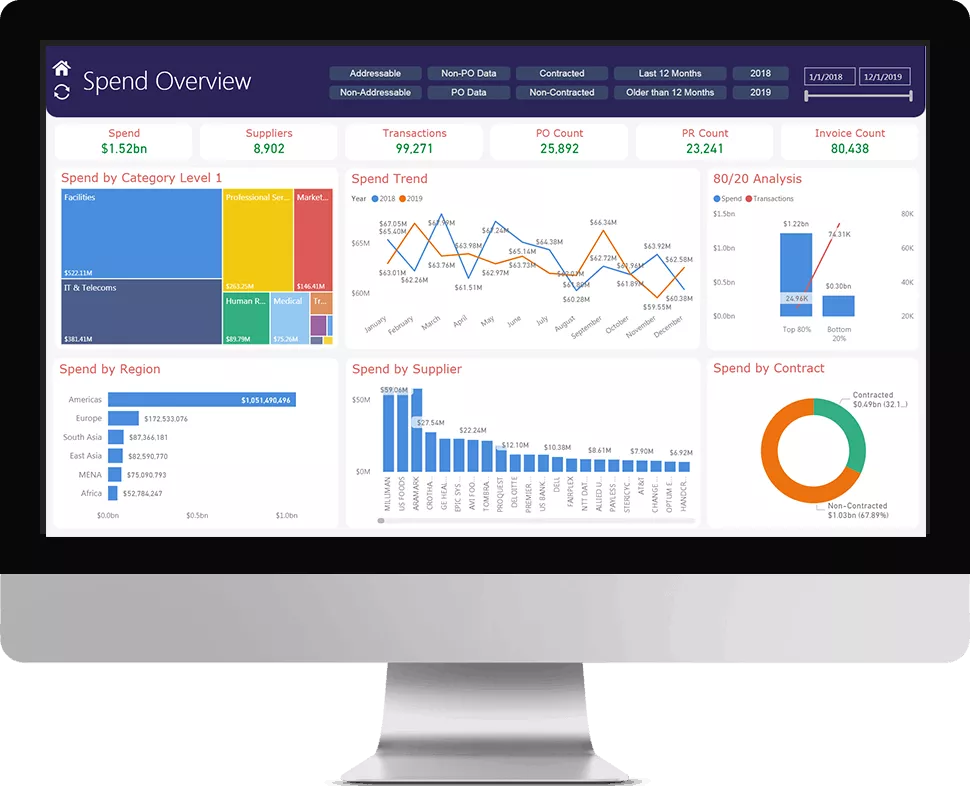Procurement is still often seen as a non-strategic back-office function. This is because practitioners often focus too narrowly on measuring cost savings directly from sourcing initiatives and lose sight of how those initiatives impact core financial metrics—such as total cost of ownership (TCO), operating profit, working capital and cash flow, among others. But by adopting a well-structured, strategic spend management framework, a distinct line can be drawn from procurement to its impact on these core business metrics, showcasing how procurement is actually an important value driver for the business.
The concept of Spend Under Management (SUM) provides exactly that framework. In this three-part blog series we’ll outline the framework in greater detail, how you can get started, and what you should expect to get from it.
What is Spend Under Management?
SUM is an enterprise initiative that impacts spend in each business unit, touching every category and supplier who supplies a product or service in order to achieve 85 percent or more of managed spend. Past research from analyst firms like Aberdeen identifies that companies can achieve 5 to 20 percent cost savings for each new dollar of spend brought under management. This can result in millions or even tens of millions in cost savings that can be either reinvested or dropped to the bottom line as realized savings impacting EPS (Earnings Per Share). Businesses that implement SUM can minimize costs by reducing expenditures on unnecessary or undesirable inventory, reduce supplier lead times to improve response times, reduce spending on staffing and improve service quality by optimizing on-time deliveries.
Moreover, SUM is much more than a sourcing framework. It emphasizes the use of intelligent technology, actionable data, and robust processes to meet business objectives. It also considers often overlooked non-pricing levers such as ensuring adherence to contract terms and pricing, purchase order compliance, effective demand management, and supplier performance management – where leakage most often occurs.
How Does Spend Under Management Work?
By implementing a proven framework, the use of dedicated resources and tailored processes, SUM can enable a smarter and more effective approach to spend management. This is key because it also provides a platform for analyzing the value of every dollar spent. Whether we’re talking about a multi-billion-dollar corporation or SME’s, it is essential to understand the details around spend and ensure they are all aligned with the business’s strategic goals.
How Should I Start?
SUM is built on creating a partnership between indirect procurement (also known as tail spend) and operations along five key operating principles across sourcing, contracting, buying, and spend decision-making. By identifying key influencers, you can create an actionable plan for your business to achieve and improve your spend goals. The concepts are simple, but the challenge is how to bring them to life within your company.
Download Now:- Spend Management Handbook
The first, and most impactful of these principles is to channel spend through procurement technology. Basic procurement technologies bring some benefits through automation, but more sophisticated systems extend those benefits by enabling process and policy control. The real value comes from intelligent procurement technology—spend analytics and eSourcing—that captures data and then transforms it into actionable insights that lead to positive outcomes. In a world of imperfect data, technology that brings clarity to how materials and services are purchased and can measure impact on the business has significant value.
For instance, do you know:
- What you’re buying at a line level by category for materials and/or services?
- How many of the organization’s resources are tied up performing routine or non-value-added tasks?
- How much time is spent on meetings and follow-ups with suppliers?
- Is there a way for the organization to see a shared view of the data?
- If there are suppliers still transacting manually with you?
All of these are addressable through intelligent procurement technology while reducing transaction costs, increasing the overall value of your business and improving productivity and compliance for your organization.
In our next post, we’ll review the remaining four principles and walk you through how they can be put into action at your organization.
In the meantime, download our Comprehensive Guide To Tail Spend Management to learn more.












